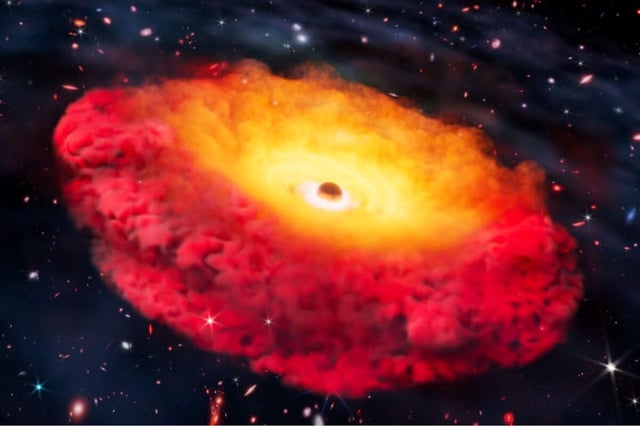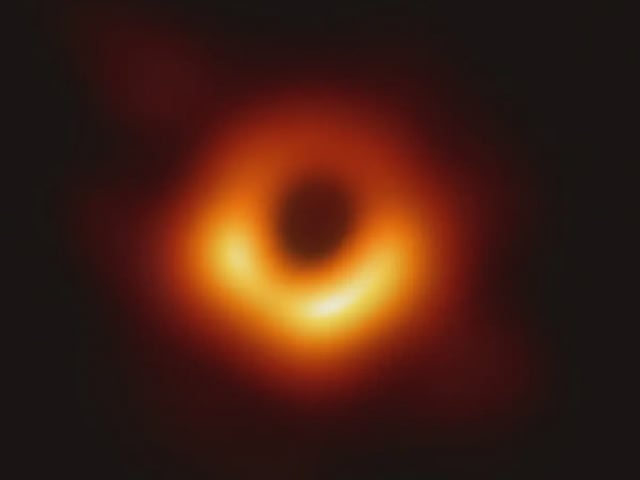Overview
- An international team led by UT Austin’s Cosmic Frontier Center used JWST’s CAPERS spectroscopic survey to verify a black hole in galaxy CAPERS-LRD-z9 just 500 million years after the Big Bang.
- Spectroscopic data revealed distinct redshifted and blueshifted emission lines from gas accreting onto the black hole, marking the first broad-line active galactic nucleus signature in a Little Red Dot.
- Scientists estimate the black hole’s mass at up to 300 million times that of the Sun, roughly half the mass of its host galaxy’s stars.
- The discovery supports scenarios of rapid early growth or inherently massive seeds, posing challenges to standard models of black hole formation.
- Researchers plan higher-resolution JWST follow-up observations to refine the black hole’s properties and investigate gas-enshrouded galaxies during the Epoch of Reionization.

